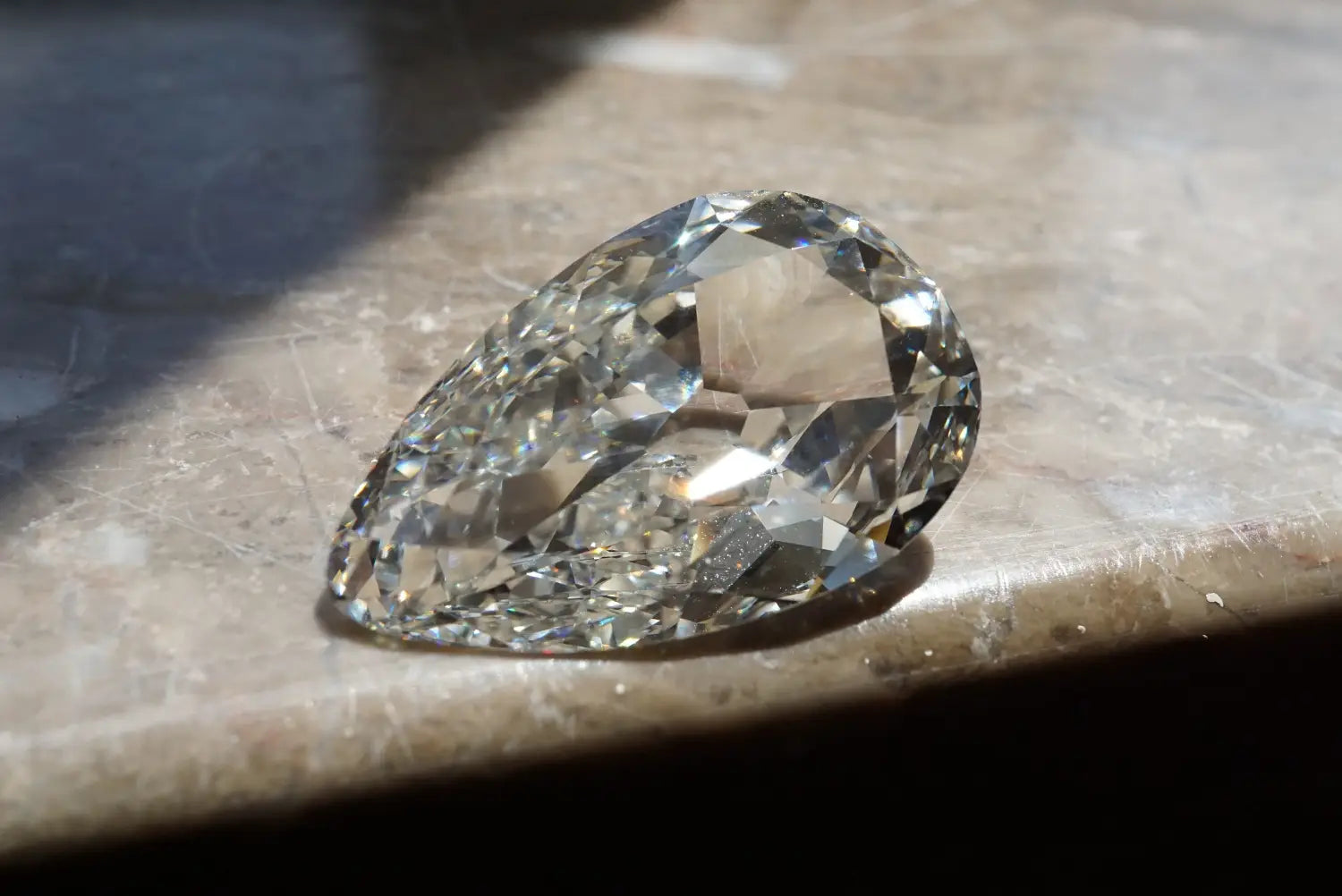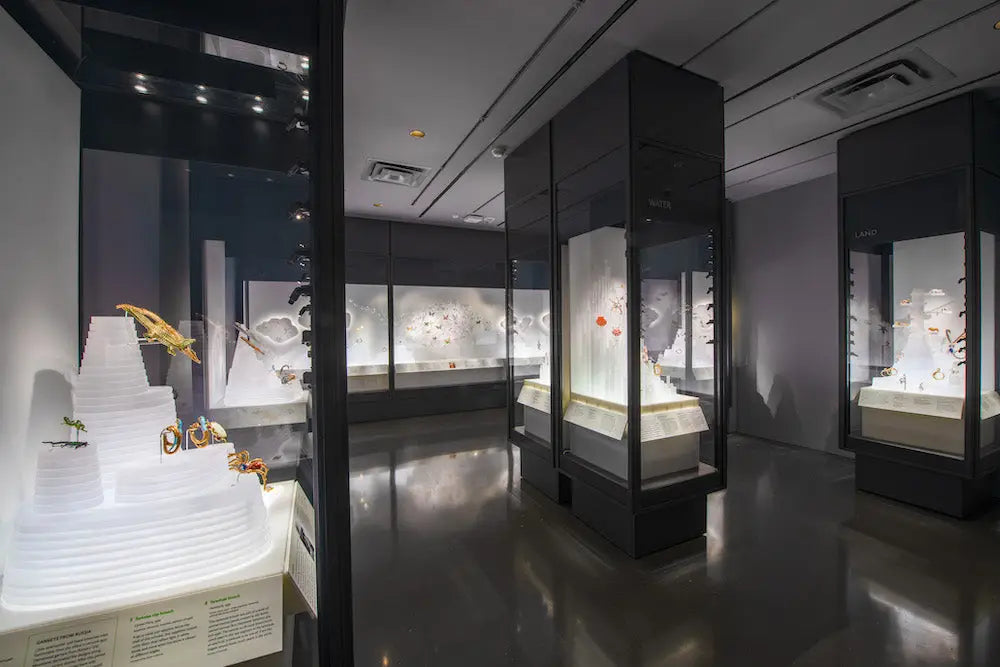
Diamond Superpowers: Brilliance, Fire, and Scintillation
Diamonds are the superheroes of the gemstone world. They’re virtually indestructible and have been known to save the day (just ask any guy who’s been in the doghouse).
Like most superheroes, diamonds possess extraordinary powers. And we’re not referring to the well-known Four Cs. Three lesser-known qualities also enhance a diamond’s beauty: brilliance, fire, and scintillation.
You’ll want to get to know these three really well. They’re the BOOM! ZAP! WOW! effect that will have the woman of your dreams gobsmacked by the ring and utterly smitten with you.
Diamond Superpower No. 1: Brilliance

Brilliance, or brightness, is the first thing you notice about a diamond. Some say a diamond can’t be beautiful without it. Brilliance is the effect of all the internal and external white light reflected from the diamond’s facets back to your eyes.
Diamond Superpower No. 2: Fire

Fire is one of the most magical aspects of a diamond, often compared to a burst of fireworks. This rainbow effect comes from light dispersion—when white light passes through the diamond, it acts like a prism, splitting the light into the seven colors of the spectrum. The diamond’s facets then scatter this brilliant color in every direction.
Diamond Superpower No. 3: Scintillation

Scintillation is the technical term for sparkle. It’s the flashes of light produced by the pattern of bright and dark areas created by reflections inside the diamond as it moves in the light. Scintillation also includes elements of brilliance and fire, resulting in a dazzling mosaic of light in motion. This effect is most striking when there’s an even pattern of bright and dark areas in the diamond, causing the flashes of light to be balanced in size.
How Cut Affects Brilliance, Fire, and Scintillation
These three superpowers—brilliance, fire, and scintillation—are among seven components the Gemological Institute of America (GIA) uses to assess the quality of a diamond’s cut. Cut is one of the Four Cs that form the basis of the GIA’s International Diamond Grading System, considered the universal standard for grading diamonds, and plays a significant role in determining a diamond’s overall beauty.
According to Al Gilbertson, project manager of diamond-cut research at the GIA and part of the team that developed the GIA Cut Grading System, these qualities are crucial to a diamond’s “face-up appearance”—how it looks when viewed from above as if set in an engagement ring.
A diamond’s proportions, such as the angles of its crown (top portion) and pavilion (bottom portion) and the measurement of its facets, also influence its face-up appearance and how light behaves as it passes through the diamond and back to your eyes.

A GIA Diamond Grading Report shows you the cut grade a diamond received. The higher the grade, the better the diamond’s brilliance, fire and scintillation. © Gemological Institute of America
Four Other Key Factors in Cut
Weight ratio and durability are two additional factors that impact a diamond’s cut. Weight ratio refers to a diamond’s weight compared to the diameter of its girdle. A diamond’s girdle is the intersection of its crown and pavilion, which defines its perimeter. The girdle’s diameter is basically the width of the diamond if you’re looking down on it, also known as its “face-up size.” The rule of thumb is that a diamond should not weigh more than its face-up size would indicate.
For instance, imagine you have two diamonds with the same average girdle diameter so they appear to have the same face-up size. However, one diamond has a greater depth or a thicker girdle, so it weighs more. The added weight won’t improve the diamond’s brilliance, fire, or scintillation, but it will increase the cost. On the flip side, you don’t want to sacrifice weight with a girdle that’s too thin, as this can compromise the diamond’s durability, making it more vulnerable to damage.
Symmetry, meanwhile, is defined as the precision of a finished diamond’s shape and the arrangement and placement of its facets. A symmetrical diamond will display even brightness, fire, and scintillation, while poor symmetry can cause light to be misdirected and reduce the diamond’s brilliance.
Polish refers to the overall quality and condition of a diamond’s facet surfaces. Any roughness or exterior blemishes on the facets can act like speed bumps, disrupting the light and bouncing it in all the wrong directions, diminishing the diamond’s sparkle.
Grading the Superpowers
Once these seven components are assessed, the GIA gives the diamond a cut grade based on a scale of Excellent, Very Good, Good, Fair, or Poor.

From left: Excellent, Good and Poor diamond cut grades according to the Gemological Institute of America.
A diamond with an Excellent cut grade (left) is one of the most brilliant. The reflections appear bright, crisp, and well-balanced due to the even pattern and outstanding contrast between light and dark areas. This is an extremely attractive diamond and can carry a higher price tag.
A diamond with a Good cut grade (center) can also be beautiful but is more so-so. The reflections aren’t as bright, crisp, or balanced as the diamond with an Excellent cut. There’s also more darkening around the center.
The diamond with the Poor cut grade (right) is meh. There are more dark areas than light, and the reflections are neither sharp nor balanced. The light performance is inferior and the diamond is basically dull. You don’t want a dull diamond.
How to Compare Diamonds
The GIA’s Diamond Grading Report (above) provides an independent assessment of a diamond’s cut, proportions, measurements, and other characteristics, including its additional “Cs” (color, clarity, and carat weight).
The American Gem Society (AGS), which founded the nonprofit AGS Laboratories, also offers independent diamond-grading reports. Its Platinum Light Performance Diamond Quality Document (below), for example, offers similar information to the GIA report, albeit with its own grading system. It also provides a visual representation of how a diamond handles light.

According to AGS Executive Director Jason Quick, you should always select diamonds that come with a grading report from a reputable diamond-grading lab. You should also shop for diamonds with a reputable jeweler. Look for one who is credentialed and receives ongoing education in the jewelry industry. You can start your search at the GIA, the AGS, or at Jewelers of America.
Working with a knowledgeable jeweler or gemstone dealer is key. They can help you look beyond the grading report to understand the nuances of a diamond’s beauty and guide you in balancing different features to fit your budget.
It’s also important to see diamonds in person to compare them next to each other under various lighting conditions. According to the GIA’s Gilbertson, brilliance is best judged in diffused light, fire in spot lighting (it can rarely be seen in diffused light), and scintillation in both types of light.
Just as important, carefully observe all the qualities of the diamonds you’re considering. Each diamond is unique, even within the same cut grade. You may find the brilliance and fire of one, the scintillation of another, and perhaps the color and shape of a third are what you find most appealing. In the end, beauty is ultimately in the eye of the beholder. Find the one that best speaks to her.
Bottom Line
Brilliance, fire, and scintillation are the “life” of a diamond. How lively they are depends on the quality of a diamond’s cut. Opt for diamonds with higher cut grades and compare them under proper lighting until you find the one she’ll love. Then give yourself a pat on the back—you’ve earned your superhero cape.

